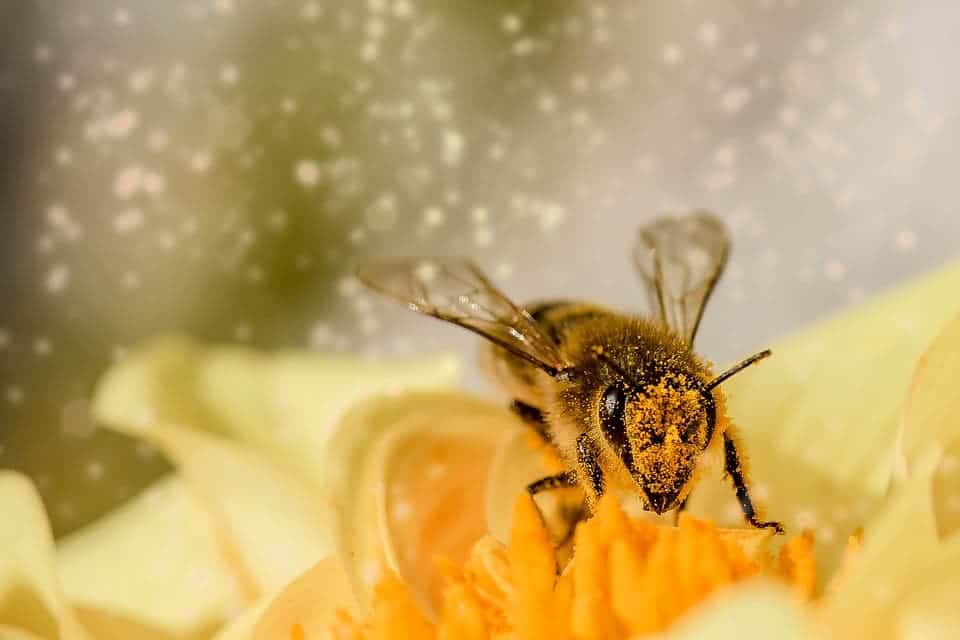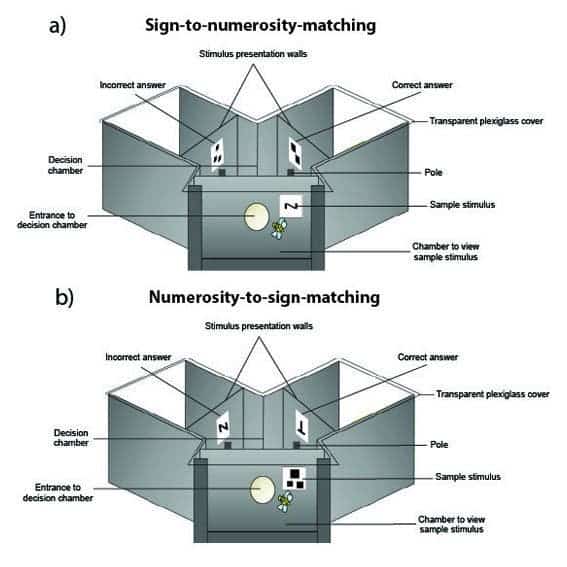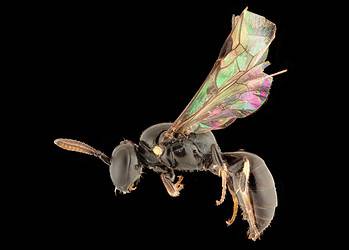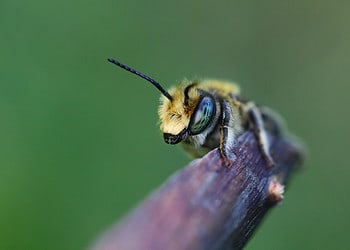
Last year, researchers at RMIT University in Melbourne showed that bees could do math. Shockingly, despite their tiny brains, these buzzing insects are capable of counting, as well as grasping the concept of zero and time. Now, in a new study, the same team of researchers has shown that bees are also capable of equating a symbol to abstract numerical quantities (for instance the symbol “2” signifies two things).
Bees and math
The human brain is made out of around 100 billion neurons, with each individual neuron forming thousands of links with other neurons. The typical brain has well over 100 trillion synapses — up to 1,000 trillion, by some estimates. This impressive hardware makes the human brain unrivaled in the animal kingdom — but not necessarily more efficient.
A bee’s brain only has a million neurons, but it uses every single one of them at full power. Although their brains aren’t much larger than a sesame seed, they have more neurons than any other insect of their size. A bee’s brain is so packed together that the density of neurons is 10 times larger than the typical mammal’s.
Bees had to develop such complex neural machinery in order to control their sensory system which gives them excellent sight (including the ability to see ultraviolet and polarized light.) and a keen sense of smell, taste, and touch.
With such a sophisticated brain, it’s no wonder that bees are incredibly intelligent insects. They can remember precisely where the tastiest nectar can be found, are capable of memorizing route details up to six miles over several days. Bees can also plot these routes on a mental map in order to determine the shortest distance between points, and are able to take a different route for their outbound and inbound journeys.
“We take it for granted once we’ve learned our numbers as children, but being able to recognise what ‘4’ represents actually requires a sophisticated level of cognitive ability,” said Adrian Dyer, an Associate Professor at RMIT University.
“Studies have shown primates and birds can also learn to link symbols with numbers, but this is the first time we’ve seen this in insects.
“Humans have over 86 billion neurons in our brains, bees have less than a million, and we’re separated by over 600 million years of evolution.
In a new study published in the Proceedings of the Royal Society B, researchers in Australia devised a novel experiment involving 20 honeybees, each marked with a colored dot in order to identify them. The insects were split into two groups: one group was taught to associate symbols with a numerical amount, and the other half had to associate quantities with symbols. For instance, an upside-down “T” stood for 3 and an “N” for 2.

The training involved a Y-shaped maze. At the base of the Y, the bees saw the object of their task — symbol or numerical amount — and then had to choose which leg of the Y to follow. One was labeled with a correct answer and the other with a wrong one.
When the bees chose the correct answer, they received a tasty sucrose treat. On the flip side, a wrong answer got them quinine, which bees dislike.
Finally, the bees were then tested to see if they grasped the concepts they were trained for. The bees were consistently and reliably able to identify the right number of things or the correct symbol, depending on the group they were assigned to.
“Here we show that honeybees are able to learn to match a sign to a numerosity, or a numerosity to a sign, and subsequently transfer this knowledge to novel numerosity stimuli changed in colour properties, shape and configuration,” the authors wrote.
There’s a catch though. Bees failed to make reverse associations — something that is trivial for a human infant.
“While honeybees learned the associations between two quantities (two; three) and two signs (N-shape; inverted T-shape), they failed at reversing their specific task of sign-to-numerosity matching to numerosity-to-sign matching and vice versa (i.e. a honeybee that learned to match a sign to a number of elements was not able to invert this learning to match the numerosity of elements to a sign),” the authors wrote.
“Thus, while bees could learn the association between a symbol and numerosity, it was linked to the specific task and bees could not spontaneously extrapolate the association to a novel, reversed task. Our study therefore reveals that the basic requirement for numerical symbolic representation can be fulfilled by an insect brain, suggesting that the absence of its spontaneous emergence in animals is not due to cognitive limitation,” they concluded.
Nature always seems to find a way to solve complex problems. And the findings may have implications for what we know about learning, reversing tasks, and how the brain creates connections and associations between concepts.






